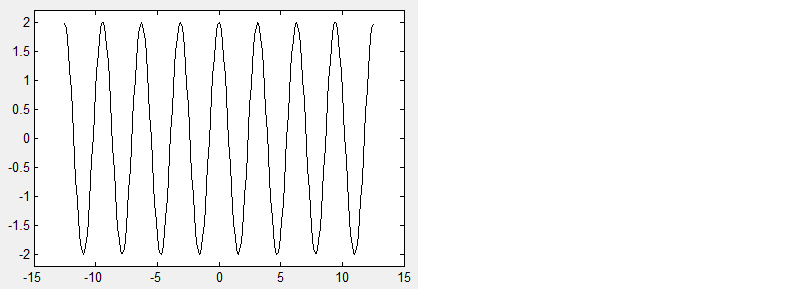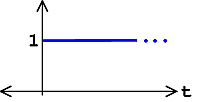1.4: Common Continuous Time Signals
- Page ID
- 22840
Introduction
Before looking at this module, hopefully you have an idea of what a signal is and what basic classifications and properties a signal can have. In review, a signal is a function defined with respect to an independent variable. This variable is often time but could represent any number of things. Mathematically, continuous time analog signals have continuous independent and dependent variables. This module will describe some useful continuous time analog signals.
Important Continuous Time Signals
Sinusoids
One of the most important elemental signal that you will deal with is the real-valued sinusoid. In its continuous-time form, we write the general expression as
\[A \cos (\omega t+\varphi) \label{1.32} \]
where \(A\) is the amplitude, \(\omega\) is the frequency, and \(\varphi\) is the phase. Thus, the period of the sinusoid is
\[ T = \frac{2 \pi}{\omega} \label{1.33} \]

Complex Exponentials
As important as the general sinusoid, the complex exponential function will become a critical part of your study of signals and systems. Its general continuous form is written as
\[A e^{s t} \nonumber \]
where \(s=\sigma+j \omega\) is a complex number in terms of \(\sigma\), the attenuation constant, and \(\omega\) the angular frequency.
Unit Impulses
The unit impulse function, also known as the Dirac delta function, is a signal that has infinite height and infinitesimal width. However, because of the way it is defined, it integrates to one. While this signal is useful for the understanding of many concepts, a formal understanding of its definition more involved. The unit impulse is commonly denoted δ(t)δ t.
More detail is provided in the section on the continuous time impulse function. For now, it suffices to say that this signal is crucially important in the study of continuous signals, as it allows the sifting property to be used in signal representation and signal decomposition.
Unit Step
Another very basic signal is the unit-step function that is defined as
\[u(t)=\left\{\begin{array}{l}
0 \text { if } t<0 \\
1 \text { if } t \geq 0
\end{array}\right. \nonumber \]

The step function is a useful tool for testing and for defining other signals. For example, when different shifted versions of the step function are multiplied by other signals, one can select a certain portion of the signal and zero out the rest.
Common Continuous Time Signals Summary
Some of the most important and most frequently encountered signals have been discussed in this module. There are, of course, many other signals of significant consequence not discussed here. As you will see later, many of the other more complicated signals will be studied in terms of those listed here. Especially take note of the complex exponentials and unit impulse functions, which will be the key focus of several topics included in this course.


